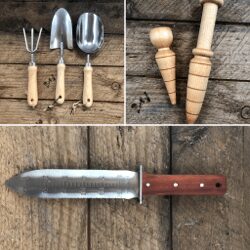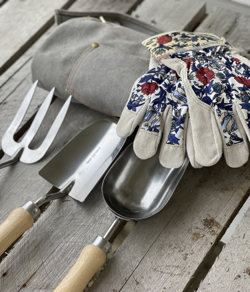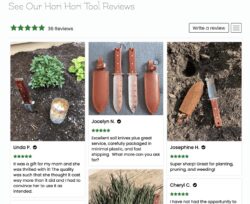How to Prune Roses: Step-by-Step Guide for Healthy and Beautiful Roses
Pruning Roses for vibrant, healthy plants
Introduction
Pruning roses is an essential gardening task that helps maintain the health, shape, and beauty of your rose bushes. Proper pruning encourages vigorous growth, enhances flowering, and keeps diseases at bay. Whether you’re a novice gardener or an experienced horticulturist, this guide will provide you with the necessary steps and tips for successful rose pruning.
Why Prune Roses?
Pruning roses serves several crucial purposes:
- Promotes Healthy Growth – Removing dead or diseased wood encourages new, healthy growth.
- Enhances Flower Production – Pruning stimulates the growth of new canes, leading to more blooms.
- Improves Air Circulation – Thinning out the plant increases air circulation, reducing the risk of fungal diseases.
- Maintains Shape and Size – Regular pruning keeps your rose bush within your desired size and shape.
When to Prune Roses
The best time to prune roses is in late winter or early spring, just as the buds begin to swell but before new growth appears. This timing allows the plant to recover quickly and start the growing season with renewed vigor.
Tools You’ll Need
To prune roses effectively, you’ll need the following tools:
- Sharp Pruning Shears – For making clean cuts on canes.
- Loppers – For cutting thicker branches.
- Gloves – To protect your hands from thorns.
- Disinfectant – To clean your tools between cuts and prevent disease spread.

Step-by-Step Guide to Pruning Roses
Step 1: Prepare Your Tools
Clean and disinfect your pruning tools to prevent the spread of disease. Sharp tools make cleaner cuts, which heal faster and reduce the risk of infection.
Step 2: Identify Canes to Remove
Start by removing dead, damaged, or diseased canes. These canes are usually brown or black and may show signs of mold or rot. Cut them back to healthy tissue, just above an outward-facing bud.
Step 3: Remove Crossing Canes
Eliminate any canes that cross each other. Crossing canes can rub together, causing wounds that invite disease. Choose the healthier or better-positioned cane and remove the other.
Step 4: Thin Out the Center
Open up the center of the rose bush by removing some of the oldest canes. This improves air circulation and light penetration, which are vital for the plant’s health. Aim to leave a balanced structure with outward-facing canes.
Step 5: Shape the Bush
Trim the remaining canes to shape the bush. Make cuts at a 45-degree angle, about 1/4 inch above an outward-facing bud. This encourages new growth to spread outward, creating a more attractive and healthier plant.
Step 6: Clean Up
Collect and dispose of all pruned material to prevent the spread of disease. Clear away any debris around the base of the plant.
Pruning vs. Deadheading
Understanding the difference between pruning and deadheading is crucial for rose care.
Pruning
- Purpose – Encourages new growth, shapes the bush, removes diseased or dead wood, and improves air circulation.
- Timing – Typically done in late winter or early spring.
- Method – Involves cutting back canes and branches to a healthy bud or cane, focusing on removing larger portions of the plant.
Deadheading
- Purpose – Promotes continuous blooming by removing spent flowers.
- Timing – Done throughout the growing season as flowers fade.
- Method – Involves snipping off faded blooms just above a set of healthy leaves or a new bud.
Aftercare Tips
- Watering – After pruning, water your roses thoroughly to help them recover.
- Feeding – Apply a balanced rose fertilizer to promote new growth.
- Mulching – Add a layer of mulch around the base of the plant to retain moisture and suppress weeds.
Common Pruning Mistakes to Avoid
- Pruning at the Wrong Time – Pruning too early or too late can harm your roses. Stick to late winter or early spring.
- Using Dull Tools – Dull tools make jagged cuts that are slow to heal. Always use sharp, clean tools.
- Over-pruning – While it’s important to prune, cutting back too much can stress the plant. Aim for a balanced approach.
Conclusion
Pruning roses might seem daunting at first, but with the right tools and techniques, it becomes a straightforward and rewarding task. Regular pruning not only keeps your rose bushes healthy but also enhances their beauty and bloom production. By following this comprehensive guide, you’ll be well on your way to maintaining vibrant and flourishing roses in your garden.
FAQs
Q: How often should I prune my roses? A: Prune your roses annually in late winter or early spring. Light maintenance pruning can be done throughout the growing season.
Q: Can I prune roses in the summer? A: It’s best to avoid heavy pruning in the summer. However, you can remove spent blooms (deadheading) and trim away any damaged or diseased growth.
Q: What if I prune too much? A: If you accidentally prune too much, your rose bush may take longer to recover and produce fewer blooms. Give it time, and avoid over-pruning next season.
More From Our Master Gardener
Recent Posts

Composting Method Comparison Table

No-Till Gardening: Introduction to a Soil-Friendly Revolution (Part 1)

Can Cardboard Be Used Safely in the Garden?

Stacking and Vertical Elements in Garden Design: A Permaculture Approach

Gardening Tools for Raised Beds & Small Spaces: Tips and Recommendations for Compact and Efficient Tools













